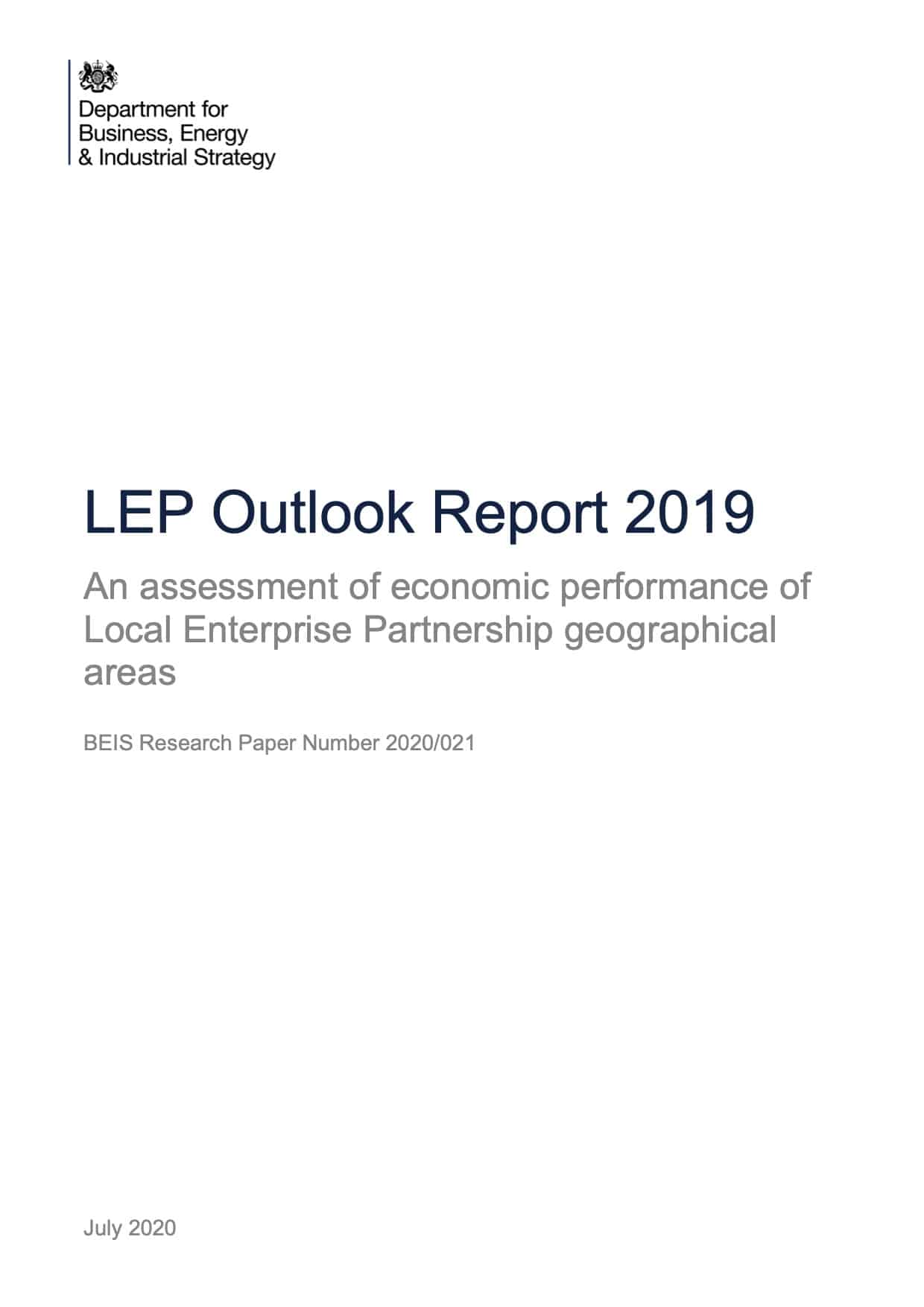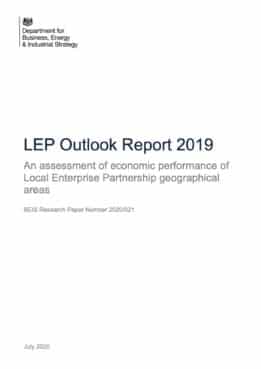LEP Outlook Report 2019
Publication date: 11 september 2020 | Report language: EN
Local Enterprise Partnerships (LEPs) are private sector led partnerships between businesses and local public sector bodies responsible for establishing priorities for public funding in the local area that they cover. Following their inception in 2011, LEPs have delivered over £9 billion worth of publicly funded projects through their management of Growth Deals, and other policies channelled through them.
The motivation for this LEP Economic Outlook report was two-fold. First was to bring together accessible open data that can be used to represent aspects of economic performance in LEP geographies under a single public resource. Such data can be used by the LEPs themselves in developing their economic strategies and by others interested in economic performance in LEPs.
The second motivation was to propose a framework of economic performance that arranges the 83 selected indicators alongside dimensions of productivity corresponding to the foundations of the Industrial Strategy White Paper: Ideas, People, Infrastructure, Business Environment, and Place. Such structure enables LEPs and other users to assess relative economic performance for many purposes but specifically for Local Industrial Strategies committed in the White Paper.
The importance of generating and exploiting new ideas for innovation and the role this plays in improving the productivity is captured in the ideas dimension alongside 16 indicators. There is a strong correlation between spending in R&D and innovation outputs, and between these two and productivity growth across countries and firms. The LEP Outlook shows areas of the North as well as the South are performing well in R&D investment and in innovation outputs such as patents. The detail in addition highlights high performing areas in Leeds or Sheffield, particularly when factoring in recent growth in these activities compared to others.
The people dimension encompasses the quantity and quality of labour supply and demand across LEP geographies using 25 indicators. The descriptive analysis shows that places with a limited number of higher education qualifiers also tend to experience skills shortages. The uneven distribution of skills can be associated with the urban-rural divide, where rural areas also experience negative growth in a pool of highly qualified individuals.
The quality of a region’s physical, digital and natural infrastructure, is known to improve productivity significantly by encouraging worker reallocation, enabling agglomeration effects through business clustering, and attracting investment and trade. Throughout 16 indicators, the LEP Outlook shows that residents of urban areas are also more likely to enjoy expansive transport links. These areas also tend to present with lower transaction costs when considering the movement of goods and services. Further, as a result of better infrastructure links, urban economies also tend to achieve lower per capita emissions, although this comes at the expense of lower overall air quality.
The business environment dimension deploys 15 indicators to cover the competitiveness of the different local economies. Indicators that reflect how competitive or dynamic an area is consider entrepreneurship, export activity, amongst others. For example, the report finds that businesses in Oxfordshire, Worcestershire and South East Midlands have the highest incidence of scale ups, which in turn may explain their economic success compared to others.
In recognition of the importance of “place” in understanding an area’s strengths and weaknesses, the place dimension consists of a selection of indicators from the other four dimensions. The 23 place indicators draw out those characteristics of LEPs that make them distinctive from other places and attractive as an area to reside, work and/or visit. For example, it is one thing to have access to static indicators such as workforce size, which tells businesses how much labour is available at a point in time. However, it is more insightful to see how labour flows in and out of a place (i.e. migration flows), which reveals if an area is attractive enough to retain qualified labour.
This is the first attempt to bring together multiple indicators from disparate sources with the aim of equipping LEPs with the kind of evidence that enables robust and comparative analysis of local economies across England. The chapters within this report give an overview as well as more detailed analysis of regions bound by LEP geographies. The results demonstrate the diverse distribution of drivers of productivity and will facilitate benchmarking of LEP-level economic performance.
The indicator framework presented in the Outlook was populated with available data in the summer of 2019. As a result, some indicators will no longer consist of the most recent data at the time of publication.




